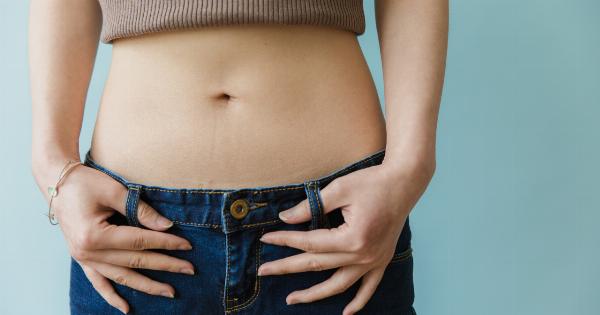Pregnancy is a beautiful journey that comes with a lot of physical and emotional changes. One of the most noticeable changes is the development of a maternal tummy. After childbirth, getting rid of the abdominal bulge can be challenging.
However, with the right interventions, it is possible to manage the maternal tummy.
What is a maternal tummy?
A maternal tummy is the bulge that develops in the abdominal area during pregnancy. It is usually caused by the expansion of the uterus as the baby grows.
The abdominal muscles also stretch to accommodate the growing baby, leading to a separation of the rectus abdominis muscles. The separation is known as diastasis recti and can cause the tummy to bulge even after childbirth.
Interventions to manage the maternal tummy
Exercise
One of the most effective ways to manage the maternal tummy is through exercise. However, it is important to wait until after childbirth and have clearance from a healthcare provider before starting any exercise program.
Once cleared, a combination of cardiovascular exercises, strength training, and diastasis-safe core workouts can help in reducing the size of the tummy and improving overall health and well-being.
Diet
Diet plays a crucial role in managing the maternal tummy. A healthy and balanced diet can help in reducing overall body fat, including the abdominal area.
Eating foods that are rich in fiber, protein, and healthy fats can also help in reducing inflammation and improving digestion. It is also important to stay hydrated and avoid sugary and processed foods.
Breastfeeding
Breastfeeding has numerous benefits for both the mother and the baby. One of these benefits is that it can help in reducing the size of the maternal tummy. Breastfeeding releases hormones that help in shrinking the uterus back to its pre-pregnancy size.
It also burns extra calories, which can aid in weight loss.
Compression garments
Compression garments like belly bands or abdominal binders can help in providing support to the abdominal muscles. They can also help in reducing inflammation and swelling, especially after a C-section delivery.
However, it is important to consult with a healthcare provider before using compression garments, as they may not be suitable for every postpartum woman.
Posture
Poor posture can worsen the appearance of the maternal tummy. It is important to maintain proper posture when standing, sitting, and even when lifting objects.
Engaging the core muscles and keeping the spine aligned can help in providing support to the abdominal muscles and prevent further separation of the rectus abdominis muscles.
Massage
Massage can help in increasing blood flow to the abdominal area and reducing inflammation and swelling. It also promotes relaxation and can help in reducing stress and anxiety, which can negatively impact postpartum recovery.
Surgery
In severe cases, surgery may be necessary to manage the maternal tummy. This is usually recommended for women who have diastasis recti or excess skin in the abdominal area.
However, surgery should only be considered as a last resort after all other interventions have been tried and failed.
Conclusion
Managing the maternal tummy requires a multifaceted approach that includes exercise, diet, posture, and other interventions like compression garments and massage.
It is important to consult with a healthcare provider before starting any intervention and to be patient as it may take time to see results.






























